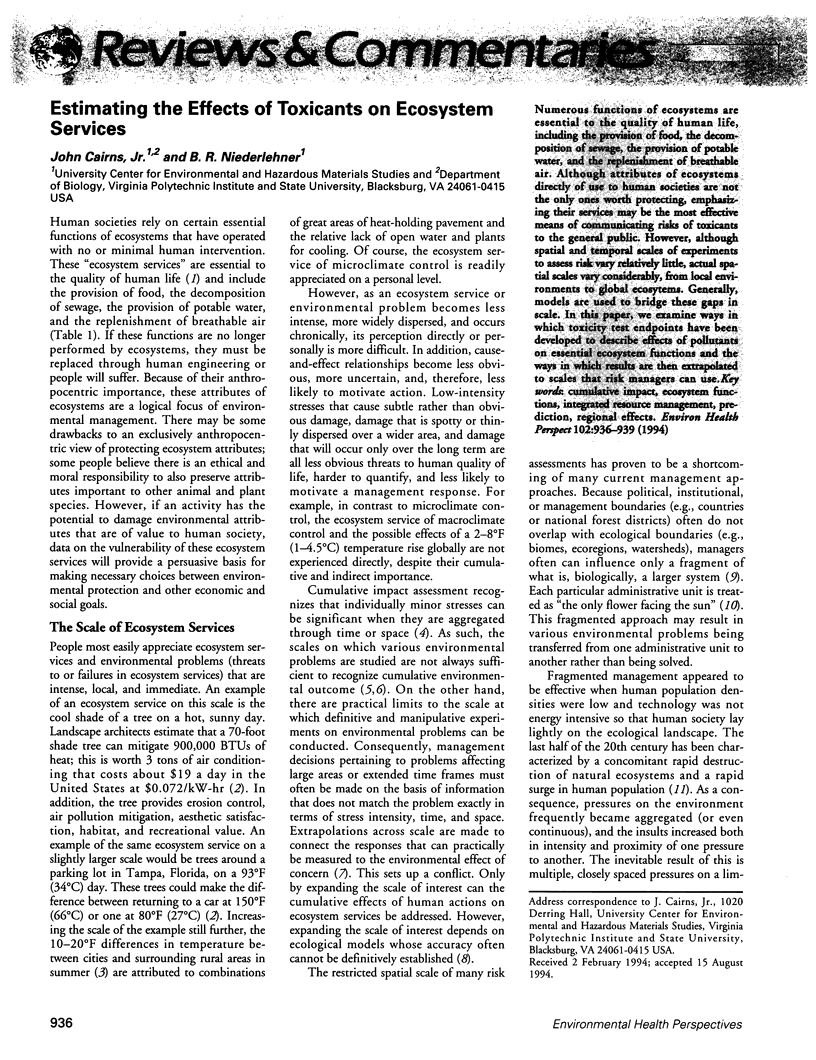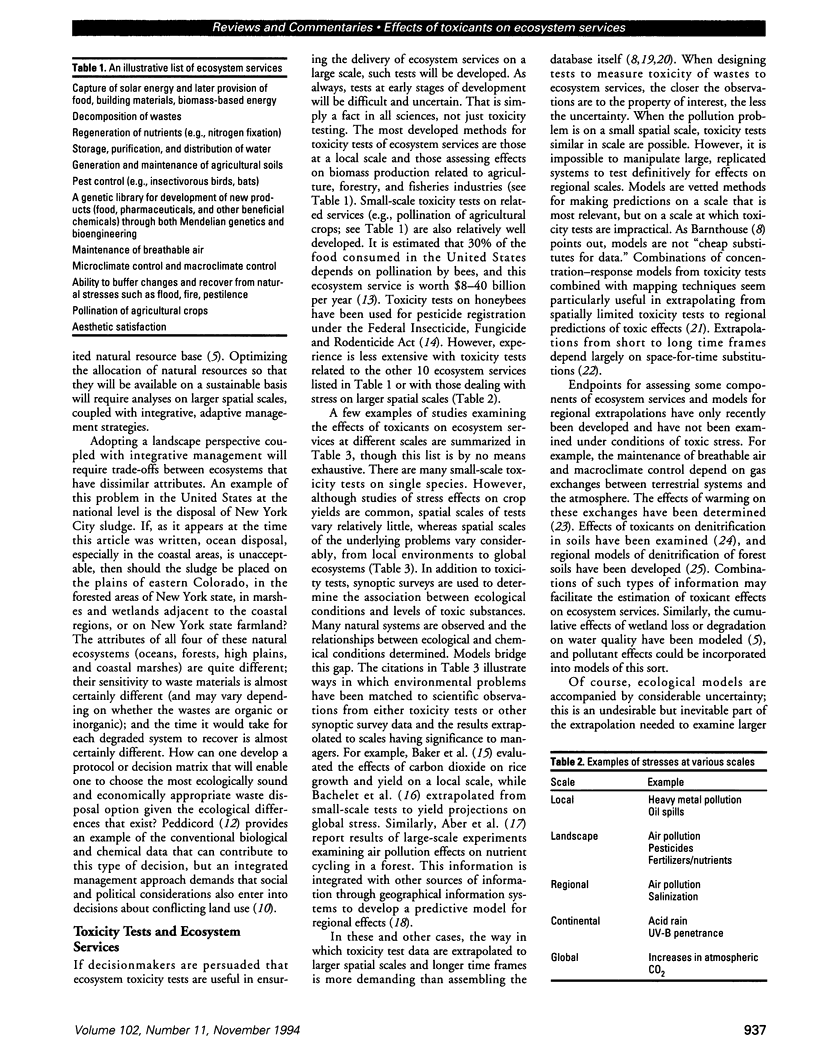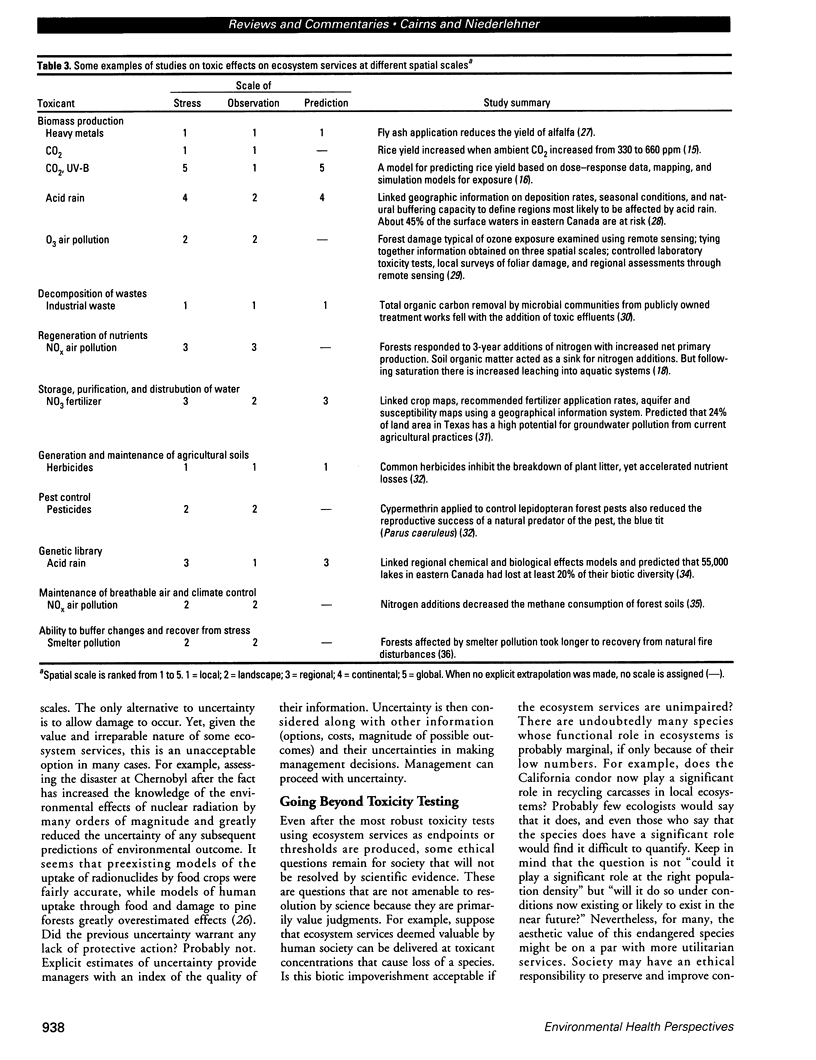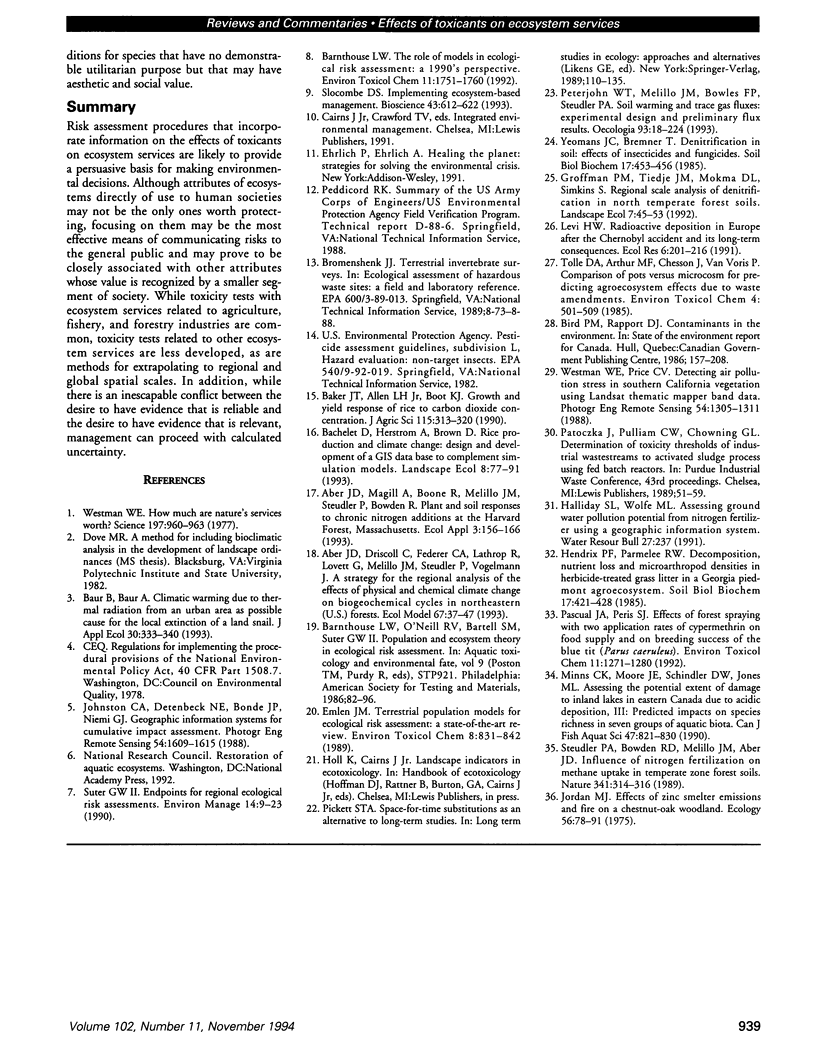Abstract
Numerous functions of ecosystems are essential to the quality of human life, including the provision of food, the decomposition of sewage, the provision of portable water, and the replacement of breathable air. Although attributes of ecosystems directly of use to human societies are not the only ones worth protecting, emphasizing their services may be the most effective means of communicating risks of toxicants to the general public. However, although spatial and temporal scales of experiments to assess risk vary relatively little, actual spatial scales vary considerably, from local environments to global ecosystems. Generally, models are used to bridge these gaps in scale. In this paper, we examine ways in which toxicity test endpoints have been developed to describe effects of pollutants on essential ecosystem functions and the ways in which results are then extrapolated to scales that risk managers can use.
Full text
PDF



Images in this article
Selected References
These references are in PubMed. This may not be the complete list of references from this article.
- Westman W. E. How Much Are Nature's Services Worth? Science. 1977 Sep 2;197(4307):960–964. doi: 10.1126/science.197.4307.960. [DOI] [PubMed] [Google Scholar]



